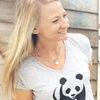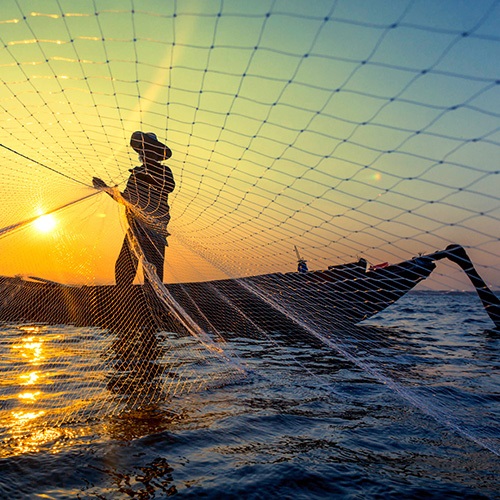Consumers are increasingly asking for sustainable seafood. WWF-Australia has some advice for corporate buyers about how to both do good for the environment and grow business.
Why is sustainable seafood important for consumers?
There is a growing demand for seafood caught or produced in a way that is sustainable. It’s why food and beverage giants Hilton, Hyatt and Royal Caribbean Cruises have made global commitments to sustainable seafood, and why here in Australia, retailers and brands like Woolworths, Coles and John West are seeking out sustainable seafood suppliers.The 2016 Sustainable Seafood Forum, convened by WWF-Australia, was attended by 44 leaders in sustainable seafood.
They came from different sectors, but their story was the same: the community expects, and customers demand, sustainable seafood.
The clear message from business at the forum was that sustainable seafood has a commercial value, is a profit maker and is fundamental to good business.
In a 2014 IPSOS survey, two-thirds said that the ‘long term health and sustainability of the fish or seafood species’ was an important factor when buying seafood.
Consumers are asking more and more questions about their seafood and there is enormous potential for modern technology to provide the answers.
What is sustainable seafood?
Sustainable seafood comes from wild fisheries or an aquaculture operation that does not threaten the existence of commercial fish stocks, damage the environment or have a negative impact on other species or habitat.For example, to be sustainable, the wild snapper fishery can’t overfish the stock, must manage the accidental catch of protected species like turtles and dolphins, and not impact populations of other non-commercial fish species.
Likewise, an aquaculture producer must protect local habitats, use sustainable feeds, minimise harmful interactions with wildlife, prevent escapes and only use chemicals in an appropriate and regulated manner.
Why does sustainable seafood matter?
The percentage of stocks fished at biologically unsustainable levels has increased from 10% in 1974 to 33.1% in 2015.While some of Australia’s fisheries are among some of the best managed in the world, this level of management is not exhibited across all fisheries in Australia and around 70% of the seafood eaten in Australia is imported, so declining global fish stocks are a concern for all of us.
With fish consumption expected to rise by 20% by 2030, pressure will only continue to build. A priority must be placed on fishing sustainability if we are going to avoid further destruction of fish stocks.
Responsible aquaculture will also need to play a big part. Australian businesses can use their collective buying power to support seafood producers who are doing the right thing and protecting our oceans and fish stocks for future generations.
How to find sustainable seafood?
When buying seafood, look for Marine Stewardship Council certified seafood for wild caught products and Aquaculture Stewardship Council farmed products.These products have been assessed by independent auditors against the global best environmental practice standards for seafood production.
In Australia around 20% of our domestic fisheries volume is MSC certified meaning a good variety of wild caught sustainable seafood is available. Additional information about certified products and suppliers is found on the MSC and ASC websites.
Australian MSC produce includes western rock lobsters and a variety of prawns from the Northern Prawn Fishery, Spencer Gulf, Shark Bay and Exmouth Gulf. Also Blue Crabs from the Peel Harvey region, Deep Sea Crabs from the west. Also the prized tuna, swordfish and Patagonian Toothfish have MSC certified Australian sources.
Many of the seafood products we commonly import also have certified options, including New Zealand-sourced fish like ling, southern blue whiting and grenadier (also known as hoki).
Certified farmed seafood is also growing in availability. The most commercially available ASC certified seafood is salmon. Since Tassal became the first to gain ASC certification in 2015, all Tasmanian companies now have a least of portion of their harvest certified. The latest sustainable farmed seafood comes from Pacific Reef Fisheries in North Queensland, which became the first Australian farm to be ASC certified for prawns and cobia this year.
What should corporate buyers do?
1. Get informed.
Ask your supplier: what is the scientific name; was it wild caught or farmed? Where is it from? How was it caught?2. Ask for the best.
Ask your supplier for MSC and ASC certified options. And ask for the Chain of Custody certificate with every consignment. This is how you know you are getting what you paid for. You can see all the MSC and ASC seafood options available by going to their websites.3. Tell your customers how good you are!
Get value from doing the right thing by telling your customers. With agreement from the MSC and ASC you can display the logo in venues and on menus to tell consumers what products are sustainable.4. Ask for help.
Organisations like WWF can help point you in the right direction where MSC and ASC options are not available.This story was originally published in Clubs and Pubs Manager magazine Spring 2018.
Jo-anne (Jo) leads WWF-Australia’s sustainable seafood and fisheries program. In this role, Jo works with brands, retailers, processors and producers to analyse seafood supply chains and help organisations identify practical means to move to responsible sourcing and production. Jo also coordinates the fisheries legislative and policy engagement work in Australia and is an active participant in numerous national fisheries reform processes. Jo has been with WWF-Australia since May 2012. Prior to joining WWF, Jo worked in the Government fisheries management sector for 11 years, specialising in environmental management of the fishing and aquaculture industries; and as an independent consultant for six years, advising Government, non-government and academic sectors on fisheries, aquaculture and environmental management issues.
Jo-anne (Jo) leads WWF-Australia’s sustainable seafood and fisheries program. In this role, Jo works with brands, retailers, processors and producers to analyse seafood supply chains and help organisations identify practical means to move to responsible sourcing and production. Jo also coordinates the fisheries legislative and policy engagement work in Australia and is an active participant in numerous national fisheries reform processes. Jo has been with WWF-Australia since May 2012. Prior to joining WWF, Jo worked in the Government fisheries management sector for 11 years, specialising in environmental management of the fishing and aquaculture industries; and as an independent consultant for six years, advising Government, non-government and academic sectors on fisheries, aquaculture and environmental management issues.



